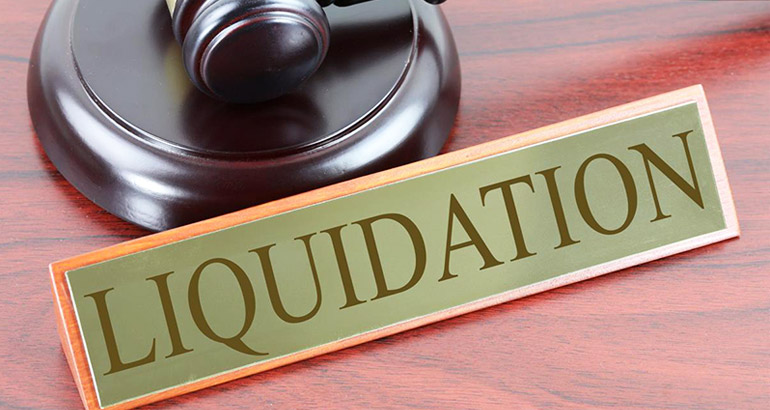Company Liquidation Fundamentals Explained
Company Liquidation Fundamentals Explained
Blog Article
An Unbiased View of Company Liquidation
Table of ContentsThe Single Strategy To Use For Company LiquidationGetting The Company Liquidation To WorkAll About Company Liquidation4 Easy Facts About Company Liquidation DescribedExcitement About Company Liquidation
A liquidator is especially appointed to oversee the winding up of a company's events in order for it to be shut down usually when the business is declaring bankruptcy. The liquidator is an objective 3rd celebration that manages the sale of firm possessions in order to settle any kind of arrearages.Their role includes, however is not limited to: Neutral Overseer: A liquidator is tasked with serving as an objective third celebration to supervise the entire company liquidation process. Create Statement of Matters: Liquidators have to develop an extensive statement of affairs record. This paper is distributed to creditors, describing the existing monetary status of business at the time of its liquidation.
After the liquidation of a firm, its existence is removed from Companies Residence and it stops to be a legal entity. If supervisors navigated the procedure uncreative, there would be no penalties or individual obligation for firm debts expected. Currently, with a fresh start, supervisors can discover brand-new service possibilities, though specialist consultation is advisable.
Indicators on Company Liquidation You Need To Know
If even more than 90% of all firm investors concur, liquidation can take place on short notification within 7 days, the minimal legal notice for lenders. However, typically, the bigger the liquidation and the even more properties and capital business has, the longer the process will take. 'Do I need to pay to liquidate my business?', the solution will rely on whether or not your organization has any possessions remaining when selling off.

We understand that no two companies coincide, which is why we will put in the time to be familiar with your business so we can recommend the very best strategy for you. We only operate in your best passions, so you can be totally certain in the solution we supply.
The Main Principles Of Company Liquidation
In the UK, there is an established process to shutting down or reorganizing a restricted firm, whether it is solvent or financially troubled. This procedure is referred to as liquidation and can just be dealt with by a qualified insolvency expert (IP) in accordance with the Insolvency Act 1986. There are four primary kinds of firm liquidation procedure: Creditors' Volunteer Liquidation (CVL); Compulsory liquidation; Administration; and Participants' Voluntary Liquidation (MVL).

In these circumstances, it is necessary that the firm ceases trading; if the organization remains to trade, the directors could be held personally liable and it might result in the insolvency practitioner reporting wrongful trading, known as misfeasance, which may lead to lawsuit. The supervisors appoint an insolvency professional and when this has been agreed and verified, there is a conference with the shareholders.
Obviously, if there are no shareholders, this step of the process is not necessary (Company Liquidation). The IP takes control of the company and starts the firm liquidation procedure. The supervisors are no much longer associated with what happens, including the sale of the company's possessions. If the supervisors want any of the properties, they can inform the IP.
The Buzz on Company Liquidation
The main distinction is that the business's financial institutions put on the court for an read the article ending up order which forces the insolvent company right into a liquidation procedure. In most instances, financial institutions take this action as a last resource due to the fact that they haven't gotten repayment via various other kinds of settlement. The court selects an insolvency specialist, additionally called an official receiver, to visit homepage perform the obligatory business liquidation process.
This sort of firm liquidation is not volunteer and directors' conduct is reported to the UK's Secretary of State once the liquidation process has been finished. Therefore, any type of director that falls short to accept the IP or has actually been associated with director transgression, or an illegal act, may cause serious repercussions (Company Liquidation).
It is used as a method to safeguard the business from any kind of legal action by its lenders. The supervisors of the firm accept make routine settlements to settle their debts over a duration of time. The assigned administrator takes care of the volunteer management process, and receives the settlements which they then disperse to creditors according to the concurred amounts.
The 8-Second Trick For Company Liquidation
This gives the firm with time to develop a plan moving forward to rescue the business and prevent liquidation. Nevertheless, now, directors hand control of the company over to the appointed manager. If a firm is solvent however the directors and investors want to close business, a Members Volunteer Liquidation is the right choice.
The firm liquidation procedure is managed by a liquidator appointed by the directors and investors of the business and they need to authorize a statement that there are no financial institutions remaining. The liquidation process for an MVL is similar to that of a click this site CVL because assets are realised yet the earnings are dispersed to the directors and the investors of the business after the liquidator's fees have actually been paid.
Report this page